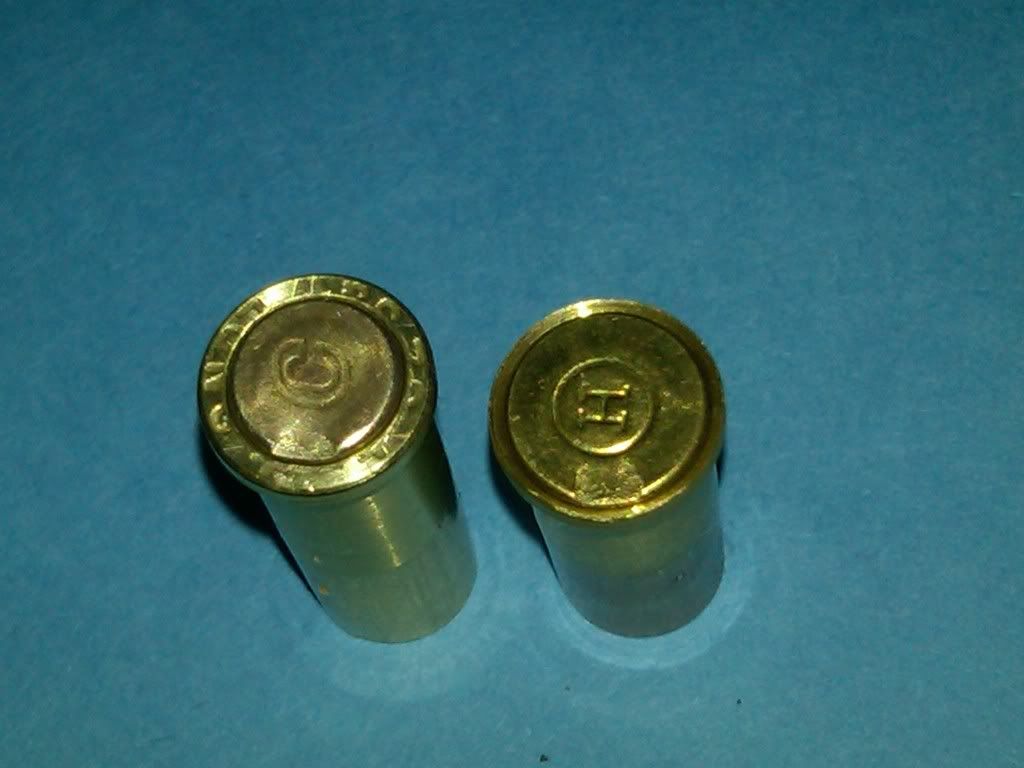I drilled it out with a 7/32 bit, (.218) and used a metal dowl rod with med/course sandpaper taped around it till snug, and opened it up
to about .225 for a snug press fit. A little slow, but not too bad. A little case lube helps it to press in, and seems to make it easier to deprime without deforming the somewhat weakened rim of the 32 case. I definately wanted a good even seal to prevent gas blowback, just like a primer.
Then I used my case chamferer to open it up to the width of the 22 blank rim to allow it to seat almost flush. Crude, but worked as test to ensure that the primer would work and case would chamber. Didn't want the breach to "crush" the blank while closing it.
Working on a jig to hold the case and a drill press so I can drill the step at 9/32 (.281) and consistantly control the depth. Blank rim diameter is about .278 and avg rim thickness appears to be around .040/.045. I will hand pick the blanks I use to match rim thickness as close as possible if nec to ensure consistant total rim thickness on the completed rounds.
I'm currently using short colt cases, but on the lookout for some long cases on the cheap. What are you using for bullets?
I bought my original ones (modified offset drilled cases and bullets) from hc-collection out of France, but the bullets are actually oversized sightly (.316/.318) for my rifle. Had to size them down to about .313 to chamber freely. I only have 3 bullets left (Only bought the
pack of 12 to try them and test the rifle). But I like tinkering and would prefer to make my own, other than casting the bullet since I don't see the cost of a mold as being worth it for this project. Money is extemely tight right now, so cheap/frugal is unfortunately an absolute necessity for me!
Ultimately, want to have long cases, with the proper 90 gr outside lubed heeled bullet, loaded with black powder or bp substitute, just like
originally designed.

|
   
   
|


|



 Reply With Quote
Reply With Quote













